Ever wondered what some of Mumbai’s popular chefs tuck into when they visit home? From Goa to Orissa, Lucknow and Ajmer, we trace their favourite dishes, which they’ve introduced to city foodies, dripping with nostalgia, family traditions and authentic flavours
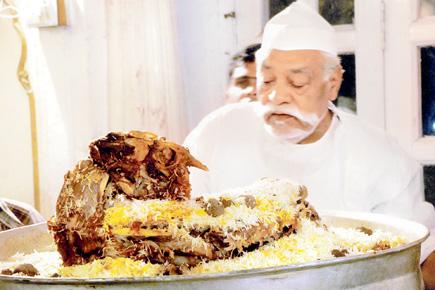
Chef Imtiaz Qureshi serving the Musallam Bakra Biryani
![]() Kshama Prabhu - Padubidri, Karnataka
Kshama Prabhu - Padubidri, Karnataka
(Executive Chef, Corum Hospitality - The Bar Stock Exchange, The Big Bang Bar & Café)
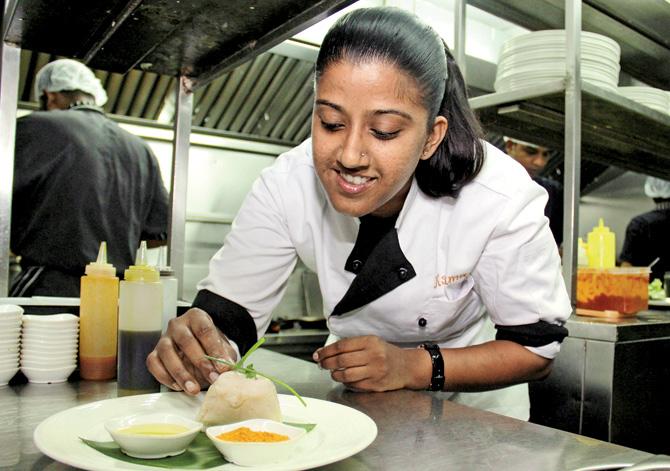
Chef Kshama Prabhu plates Khotto
Childhood memories: My native place is Padubidri and Kasarkod (mother’s home town), near Mangalore. I remember the morning walks on the beaches, and the temple visits with delicious foods offered to gods as prasadam, and later, served to devotees. These included fried Breadfruit Phodhi, Sassam, Goli Bhajo and Pathrode.
ADVERTISEMENT
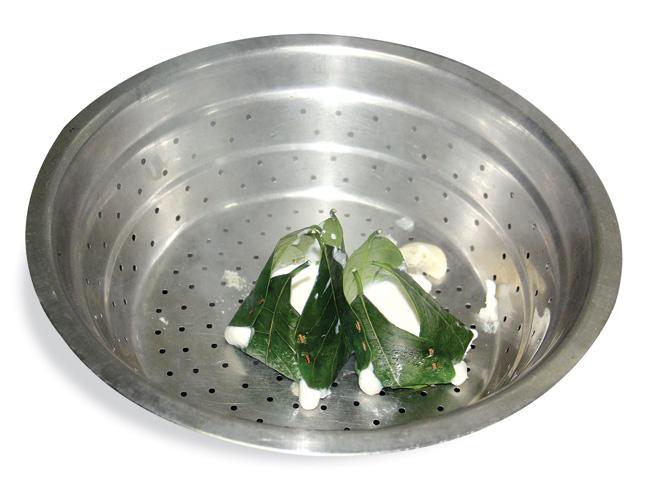
Wrapped in jackfruit leaves. Pics/Sharad Vegda
My favourite: Khotto, which could be a meal itself. Resembling an idli, it is cooked in a drone made of fresh jackfruit leaves and then steamed. It can be eaten with dali toi (Konkani-style lentils), sambhar or a drizzle of coconut oil and Mangalorean pickle.
The master chef: My great grandmother used to make this dish really well. As kids, we would make the drones with the jackfruit leaves and she would ensure that the drones didn’t have any gaps in between, as they were secured with a thin bamboo stick. She would treat us to Gadbad ice cream if we made them correctly.
In my restaurant: I made a Breadfruit Burger and that was tasty. I would also like to add Khotto to the menu, adding my own twists.
Ashish Bhasin - Ajmer, Rajasthan
(Executive Chef - Trident, Bandra Kurla)
Childhood memories: I was born and brought up in Ajmer and moved out only after completing my Standard 12. I make it a point to visit home at least once a year to visit my family. I remember indulging in dishes like Dal Pakwan, Sohan Halwa and Kadhi Kachori. Pushkar, located at a distance of a few kilometres from Ajmer, serves excellent Malpuas and Gull. Nasirabad is famous for its giant-sized kachora and Kishangarh is famous for its Makhan bada and Namkeen sev.

The Kadhi Kachoris served at Khandelwal Chat on Gol Chakkar in Kesarganj
My favourite: I am a diehard fan of Kadhi Kachori and Laal Maas. Kadhi Kachori is my breakfast every day, whenever I am in Ajmer. The kadhi is distinct in taste as no curd or buttermilk is used in its preparation. Gram flour is mixed with tamarind water and no other kadhi can match this taste. 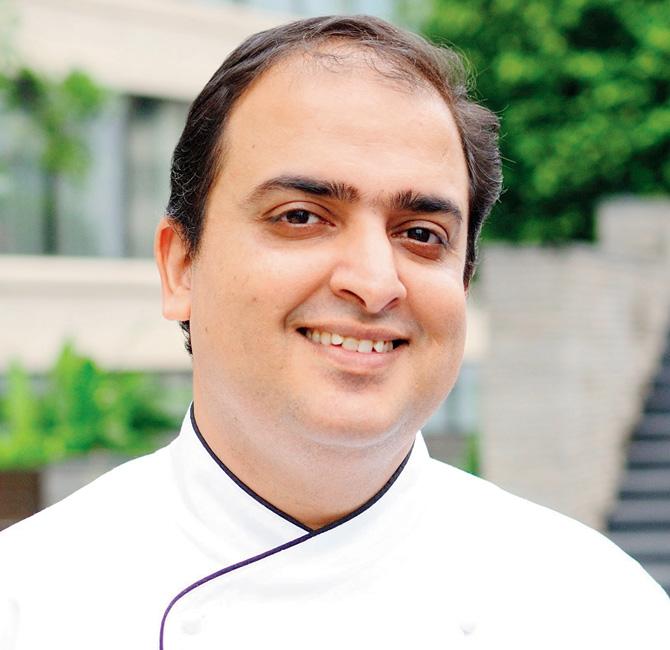
Ajmer are one of chef Ashish Bhasin’s (above) favourites
The master chef: As a child, I would visit Shankar Mishthan Bhandar to indulge in Kadhi Kachori. It was also made at home as Sunday morning breakfast. Meanwhile, I would frequent many of my Rajput friends’ homes for Laal Maas prepared by their mothers. What’s unique about Laal Maas is the use of Mathania chilies, which bring out the true essence of the dish. Traditionally, the dish was made in open clay pots on open wooden flame chulhas (stoves). The burning wood would produce a lot of smoke that was absorbed by the meat. 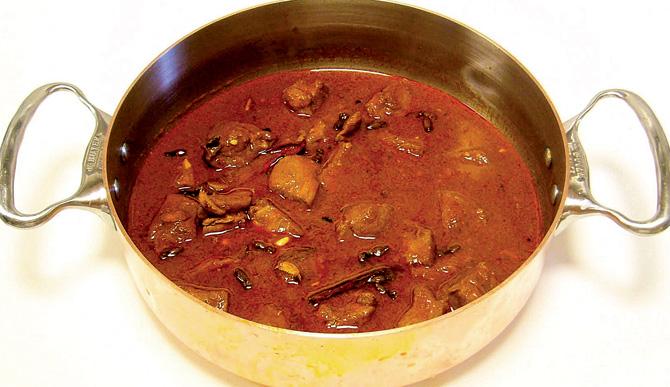
Laal Maas
In my restaurant: I serve authentic Laal Maas at Maya restaurant in Trident — Bandra Kurla.
Floyd Cardoz - Calangute, Goa
(Culinary Director, The Bombay Canteen)

Floyd Cardoz and (facing page) his recipe of Bangda Rechado served at The Bombay Canteen
Childhood memories: I was born and brought up in Mumbai but would visit Calangute (my mother’s side) in Goa twice a year and stay on for a month (summer and winter). Now, I visit once a year. We would stay at my great grandmother’s house. She would always slaughter a pig when we would go there and make the pork dishes like Sorpotel, Vindaloo and pork sausages. Since she owned rice plantations, we would also dry the previous year’s rice in the frontyard and we’d be made to have Kanji (rice porridge) that we hated. A pao-wala would sell Goan bread and we’d have these with homemade mango and jackfruit jams. That’s why, I love jackfruit a lot, even today. It takes me back to that place. 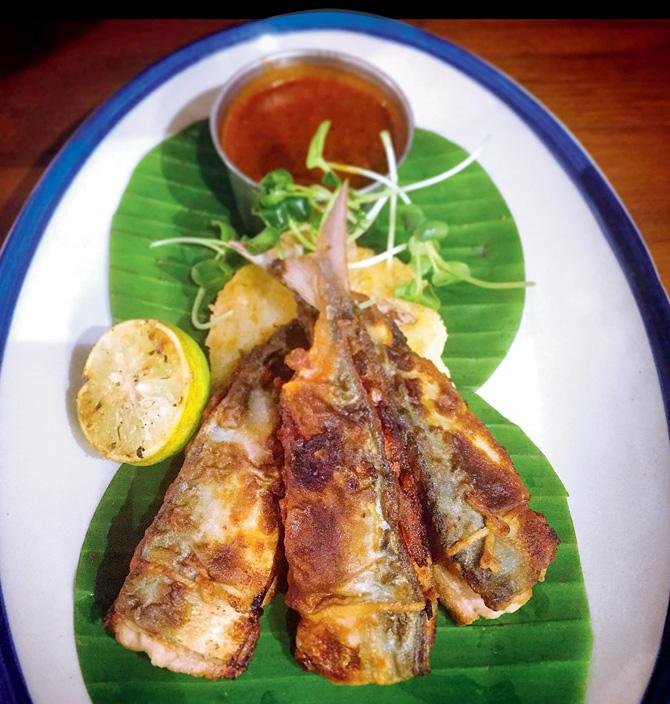
My favourite: Sorpotel and Bangda Rechado (Goan Mackerel Curry served with rice cakes). We would go to the market every morning to pick up fresh catch, as there were no refrigerators at that time and fish couldn’t be preserved. We’d have Bangda Rechado for lunch every day.
The master chef: Bangda Rechado is a family recipe. My mother makes superb Sorpotel. Whenever she makes it, I still slaughter a pig for it as its blood is used in the recipe. We have it with sanna (steamed rice cakes) fermented with toddy.
In my restaurant: I included Sorpotel at Tabla (in New York) but the recipe includes pork liver and patrons don’t like that. At The Bombay Canteen, I serve Bangda Rechado.
Anees Khan - Behrampur, Orissa
(Chef and Entrepreneur, Star Anise Patisserie)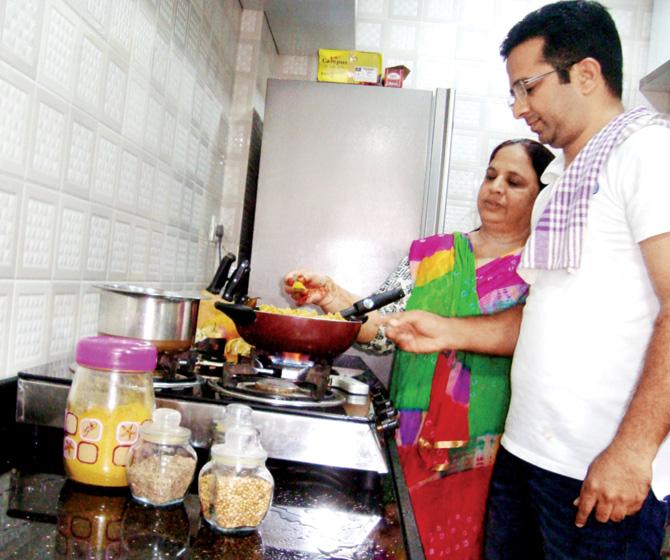
Chef Anees Khan cooking with his mother, Rashida Ali Khan in their home kitchen in Orissa
Childhood memories: I stayed in Behrampur for 20 years and still make it a point to visit my hometown once a year. Our evening get together with friends involved going for a walk to try different street food options. Some of the dishes I savoured included Ghugni (a spicy dish made from peas, garnished with onion, fried chana dal, coriander and lemon and served with crisp poories); Chicken Egg Roll and Lassi (including rabadi with nuts, vanilla and coconut) at Murty’s Girija Chak.
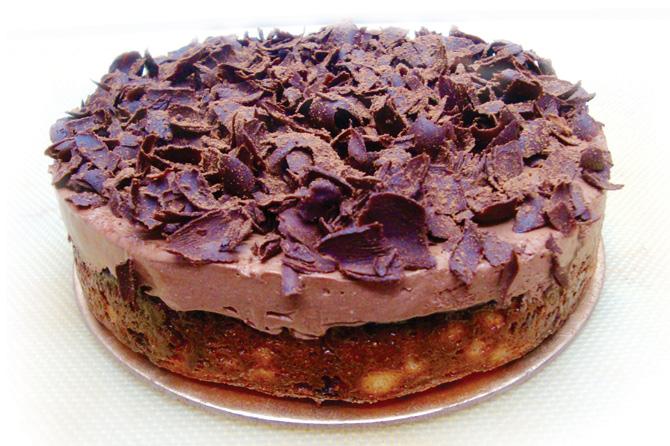
Chenna Puda Cake, a modern version of the traditional Chenna Poda, served at Star Anise
My favourite: Chenna Poda that literally means burnt cheese in Odiya. It is made of well-kneaded homemade fresh cheese (chenna), sugar, cashew nuts, raisins and is baked for several hours until it turns brown. Chenna Poda is the only well-known Indian dessert whose flavour is predominantly derived from the caramelisation of sugar. Being a pastry chef helps me relate to this dish as I too bake a lot of cakes and I love the smell of caramelised baked goods.
The master chef: My nanaji (maternal grandfather) would send Chenna Poda wrapped in Sal leaves for my sister and I when we were kids. I made it four years ago and could only perfect it after three attempts.
In my restaurant: I developed a mini Chenna Puda pastry with a chocolate mousse topping, and it was super duper hit.
Mohd Ishtiyaque Qureshi, Lucknow
(Managing Director, Kakori House India Pvt Ltd)
Childhood memories: I was born in Sadar Cantt, Lucknow and stayed there till I was 10. Even now, I visit my hometown at least once a month as the base of Kakori House is there. My father (chef Imtiaz Qureshi of Dum Pukht fame) was a very famous caterer besides being the head chef of Hotel Krishna (now Sahu Cinema) in Hazratganj (also in Lucknow). He would take me to various outdoor catering functions where I would do small jobs and in the end, enjoy the delicacies he had cooked. In Lucknow, our meals would be as per season. During winters, we would eat Moong Gosht, Methi ki Khichdi, Paya, Nihari or fresh liver grilled over cow dung cake fire. During summer, it would be garlic chutney with Besan ki Roti cooked over fire along with Aloo Ka Bharta, Rakhocha (made with colocasia leaves), Dahi Phulki and Khanduee. In the rains, it would be Nari Ka Saag (only available in this season and it grows on sides of cultivated fields) as well as a combination of meat with veggies like potatoes and pumpkin.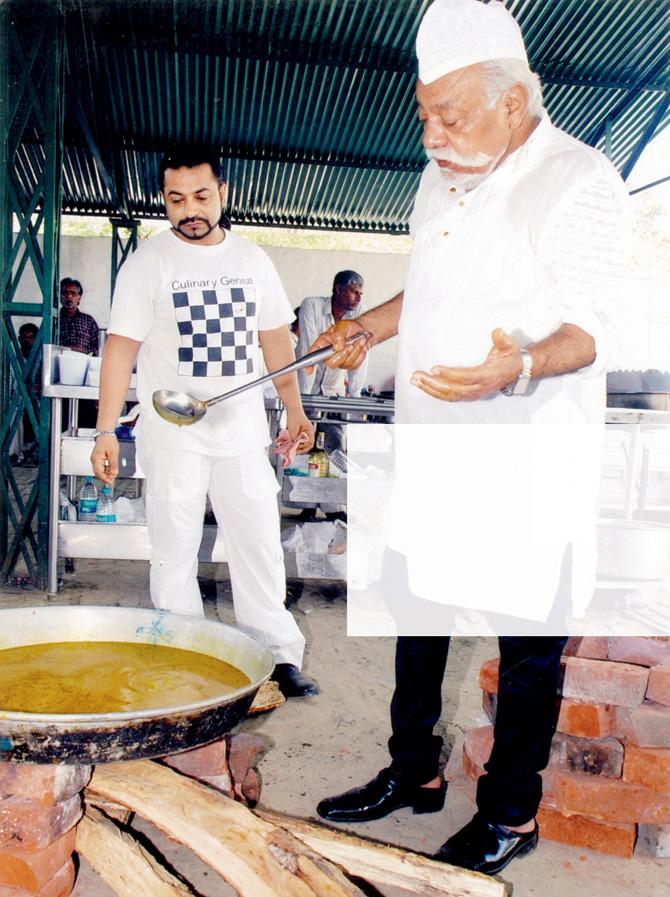
Mohammed Ishtiyaque Qureshi (left) of Kakori House looks on as his father, chef Imtiaz Qureshi prepares Korma at Baradari, Lucknow in 2009. Catering to a large wedding, these preparations were filmed for one of the episodes of Gordon’s Great Escape presented by the popular chef Gordon Ramsay. Pic Courtesy/Ishtiyaque Qureshi
My favourite: Moong Gosht and Khanduee. Cooked in wood fire with fresh malai, the Moong Gosht involves roasting the moong dal. The dal should not be over-roasted and remain smooth and creamy. It also includes mutton and fresh soya (dill) leaves that you get in Lucknow, which lend a strong flavour to the dish. Its combination with Bagharey Chawal (sautéed rice) is terrific. In our community, Moong Gosht is made when young couples get engaged. Meanwhile, Khanduee is made with besan (gram flour) in diamond shapes, cooked in fenugreek-flavoured gravy. 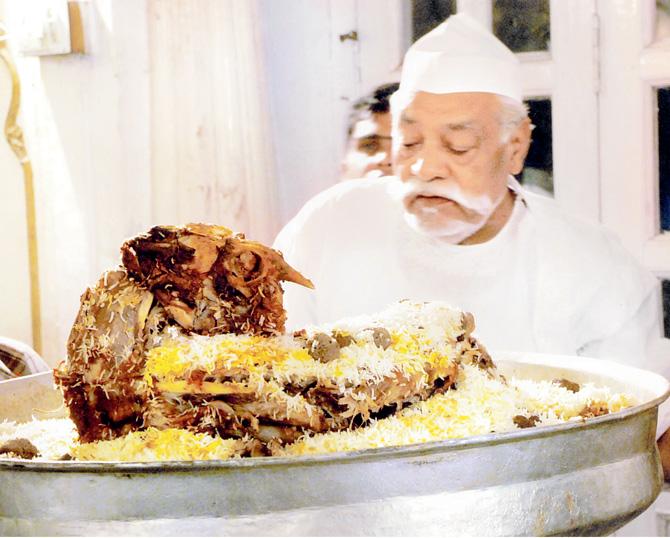
Chef Imtiaz Qureshi serving the Musallam Bakra Biryani
The master chef: While Moong Gosht is a traditional family recipe, my mother (Nazma) makes the best Khanduee and my father has named the dish, Nazma Curry, after her. 
Gordon Ramsay tries a mutton piece while Senior Qureshi and son, Ishtiyaque look on. pics Courtesy/Ishtiyaque Qureshi
In my restaurant: I’ve included the dry version of Khanduee in Kabab Hut at Juhu’s Hotel Sun-N-Sand, called Tikka Bahare Chaman. I prepare Moong Gosht for banquets and bulk orders on request at Kakori House. People love it.
Khotto
Recipe by: Kshama Prabhu – Padubidri, Karnataka
(Executive Chef, Corum Hospitality — The Bar Stock Exchange, The Big Bang & Café)
For 10 Khottos
Ingredients:
>> 2 cups urad dal
>> 3 cups idli rawa
>> 10 drones made from jackfruit leaves
Method:
>> Soak the dal for atleast about 8 hours.
>> Grind the dal in a mixer by gradually adding very little water at a time.
>> Grind till it achieves a thick, paste-like consistency and it should be very porous.
>> Wash the idli rawa and fold in with the ground dal.
>> Fold in one direction.
>>Add salt to taste.
>> Leave this batter overnight and let it ferment.
>> Next day morning, give the batter a good stir.
>> Get the drones ready, grease them with oil and pour the batter in each drone.
>> Steam these in the steamer for about 10 minutes.
>> Serve hot with some molagapodi (gunpowder), sambhar or just a generous drizzle of coconut oil.
Moong Gosht
Recipe by: Mohd Ishtiyaque Qureshi – Lucknow
(Managing Director, Kakori House India Pvt Ltd)
Ingredients:
1 kilo of mutton
250 gms Hara moong dal (sabut)
150 ml oil
2 onions, sliced
1 tbsp ginger (julienne)
5 tbsp soya leaves (dill leaves)
2 tbsp green coriander
1 lemon, squeezed juice
2 tbsp ginger-garlic paste
2 tbsp turmeric powder
1 tbsp coriander powder
1 tbsp red chilli powder
Whole spices like green cardamom, clove, cinnamon, bay leaves (few pieces of each)
2 tsp Garam masala
100 ml Malai (fresh cream)
Salt to taste
Method:
>> Wash meat and drain water.
>> Roast moong dal with little oil in a kadhai on very slow fire for five minutes and wash in water. Pressure cook till it is soft and smooth.
>> Heat the oil. Fry the onions till they turn golden. Add whole spices. Add mutton, ginger-garlic paste, turmeric powder, coriander powder and red chilli powder.
>> Put a lid on the vessel and cook on slow flame for 15 minutes. Remove the lid and cook on medium flame till water dries up and meat is well sautéed.
>> Add soya leaves (dill leaves) and stir for one minute. Add moong dal to the meat and mix well.
>> Add salt, garam masala and lemon juice. Let it simmer till meat is cooked.
>> Add malai and fresh green coriander.
Chenna Poda
Recipe by: Anees Khan – Behrampur, Orissa
(Chef and Entrepreneur, Star Anise Patisserie/Viennoiserie/Boulangerie)
Ingredients:
½ kg Chenna (paneer) squeezed (freshly curdled)
¼ cup suji/semolina/rava
1 cup Caster Sugar
½ tsp cardamom powder
¼ cup raisins
2 tbsp broken cashew nuts
Method:
>> Preheat the oven to 180 degrees Celsius.
>> Line an 8" cake tin with ghee and spread 2 tbsp of caster sugar on the bottom. Cook on a low flame till the sugar caramelises. Set aside.
>> Make Chenna the way you make paneer and let it stand on the sieve for 10 mins without pressing.
>> Roast the raisins and cashew nuts in ghee and keep aside.
>> Take the Chenna in a clean bowl and mash it thoroughly with the semolina, caster sugar until you get a soft and crumbl-ey mixture. Add the cardamom powder, roasted raisin and broken cashews. Mix well.
>> Transfer the Chenna mix in the prepared caramel cake tin.
>> Bake for 30 mins until a toothpick comes out cleanly.
>> When chilled for 2-3 hours, de-mould the Chenna Poda. Cut slices and serve. It stays for a week in the refrigerator.
Bangda Rechado
Recipe by: Floyd Cardoz – Calangute, Goa
(Culinary Director, The Bombay Canteen)
Makes about 4 portions, 2 pcs each
Ingredients:
8 mackerel, each about 150 gms
2 cups rice flour
For Rice Cake
3 cups basmati rice, cooked
1 ½ cup toor dal, cooked
½ cup fried toor dal
Salt to taste
1 tsp green chilli, finely chopped
For Rechado masala
15 Kashmiri red chillies
1 inch cinnamon stick
1/4 tsp turmeric
5 garlic cloves
1 tsp cumin seeds
3 cloves
1½ cup onion, chopped
1 tbsp tamarind paste
Palm vinegar to taste
1 tsp sugar
Salt to taste
For Ras
10 Kashmiri red chillies
½ tbsp cumin seeds
½ tsp turmeric powder
12-14 garlic cloves
1 tbsp ginger, chopped
½ tbsp black pepper
3 tbsp oil
1 ½ cups onion, sliced
4 cups water
2 tbsp tamarind paste
Palm vinegar to taste
Salt to taste
Sugar to taste
Method:
>> Clean the mackerel, cutting off the head and removing the guts. Keeping the two fillets intact and attached at the tail, remove the central bone. Keep refrigerated.
>> To make the rice cake, mix together the cooked basmati rice, toor dal, green chilli and salt till well combined. Divide it into 8 balls and then flatten them lightly to form rice cakes. Heat oil in a non-stick pan and sear the rice cakes on medium heat about 3-4 minutes on each side till golden brown.
>> To make the Rechado masala, blend together all the ingredients in a mixer till a paste is formed. Taste and adjust seasoning with salt and palm vinegar. Spread a little bit of the paste in between the two fillets of each mackerel and then tie the two fillets together with a butcher’s twine to keep them together.
>> To make the ras, make a paste with the red chillies, cumin, turmeric, ginger, garlic and black pepper. Heat the oil in a pot and add the sliced onions. Cook on medium heat for a few minutes till the onions are translucent. Add the red chilli paste, water and tamarind paste and cook on medium heat for about 20-30 minutes till the oil separate and the masala is cooked through. Add more water if necessary. Taste and adjust seasoning with salt, sugar and palm vinegar.
>> To cook the mackerel, heat enough oil to cover the bottom of a non-stick pan on high heat. Season the stuffed mackerel with salt and pepper and then dust it with rice flour. Shake off the excess rice flour and gently place the fish on the pan without over crowding the pan. Cook each side for about 3-5 minutes and then remove onto a plate lined with paper towels. Cut and remove the butcher’s twine and serve hot with the crispy rice cakes and the ras.
Laal Maas
Recipe by: Ashish Bhasin – Ajmer, Rajasthan
(Executive Chef - Trident, Bandra Kurla)
Serves 10
Ingredients:
2 kg Lamb barrah and boti (50 percent of each)
300 gm yoghurt
200 gm Mathiana chilli paste
60 gm coriander powder
Salt to taste
100 gm ginger-garlic paste
40 gm garlic, chopped
200 gm ghee
5 gm cinnamon
4 gm clove
3 gm bayleaf
5 gm black cardamom
400 gm onion, chopped
300 gm canned tomato puree
Method:
>> Mix the lamb with 1/2 the yoghurt, 1/2 garlic paste, half of red chilli paste, salt and cumin powder.
>> Heat ghee, add whole garam masala except for the cloves and the whole red chillies, stir for few seconds.
>> Add chopped onions, fry to golden brown colour.
>> Crush the onion by adding a little hot water.
>> Add marinated lamb, mix well and bhuno for 8-10 minutes on medium high heat.
>> Add rest half of the chilli paste, ginger garlic paste, coriander powder and the yoghurt and cook for 8-10 minutes.
>> Add hot water and bring to a boil and simmer till the lamb is 3/4th done.
>> Remove the pieces from the gravy and strain the gravy and add the pieces back into the gravy.
>> Add the tomato puree and bring the gravy to a boil and cook till the lamb is soft.
>> In a separate vessel, heat some ghee and add the cloves, whole red chillies and the garlic chopped into it. Cook till the chilies change to a darkish colour and add this mixture to the curry.
>> In a small steel bowl, place a red hot charcoal. Place this bowl in the centre on curry. Put some chopped garlic, few cloves and half a teaspoon of desi ghee.
>> Cover with a lid for a minute and let the curry absorb smoke.
>> Bring back to a simmer before serving.
 Subscribe today by clicking the link and stay updated with the latest news!" Click here!
Subscribe today by clicking the link and stay updated with the latest news!" Click here!







